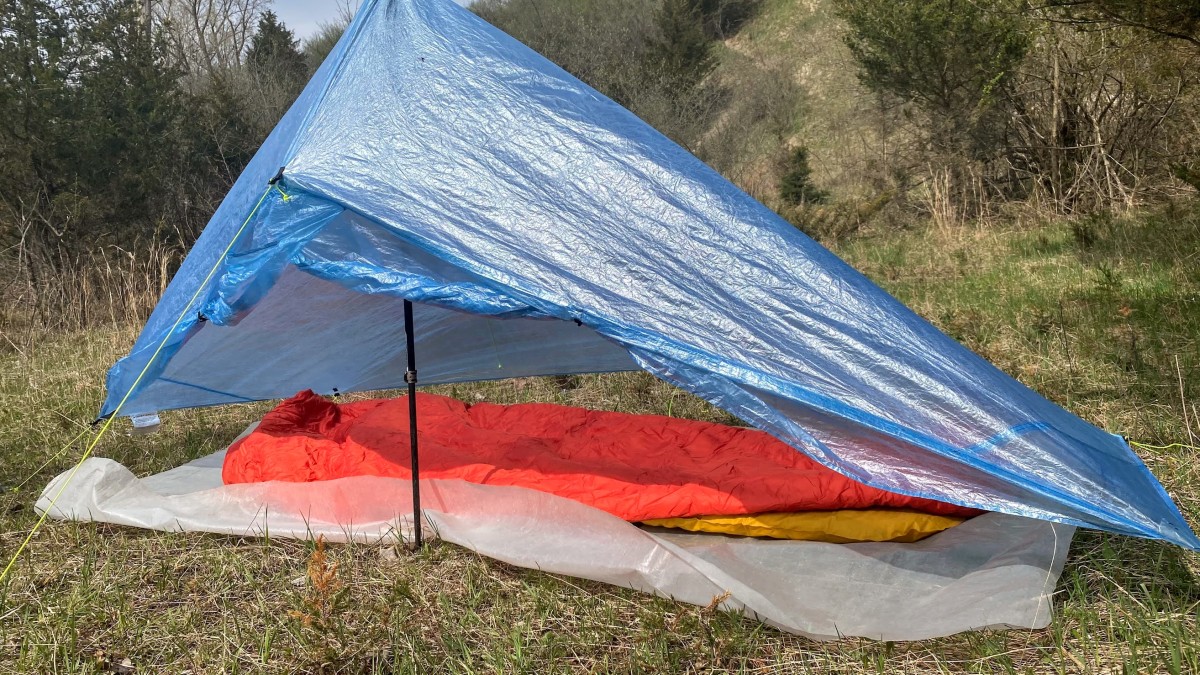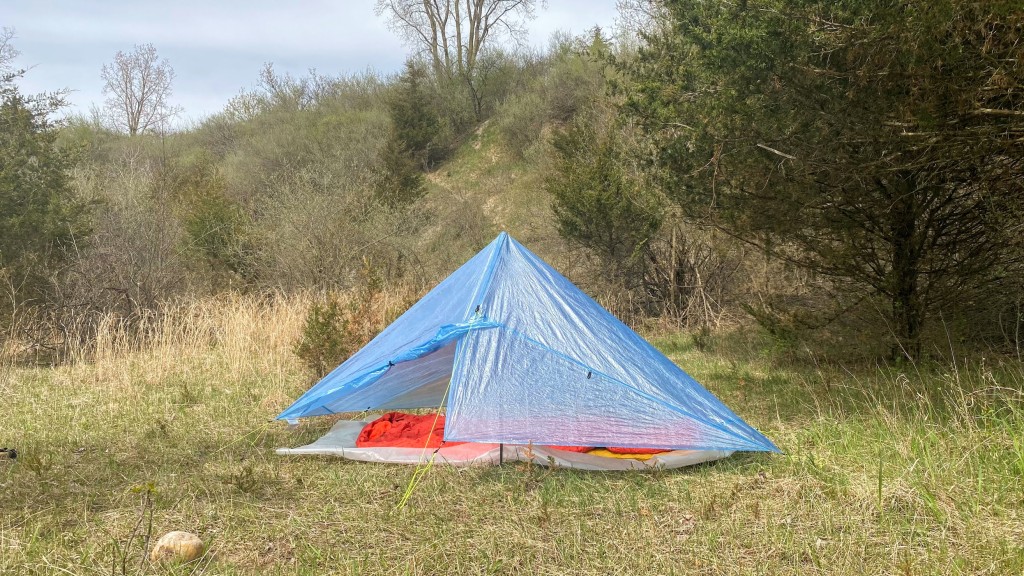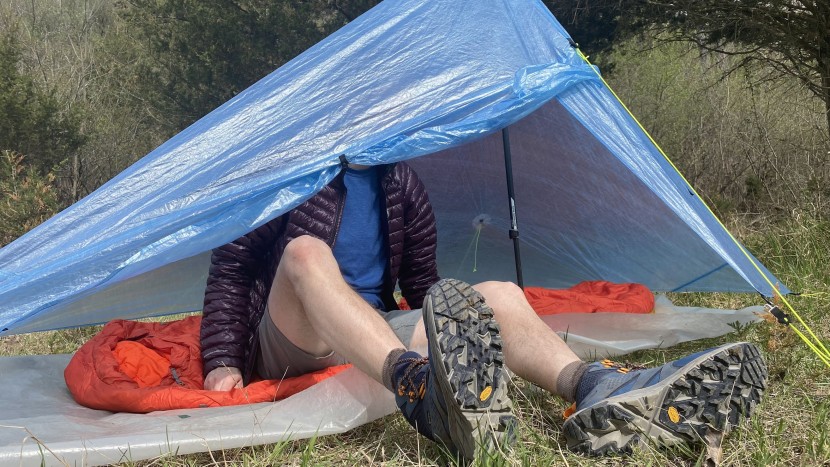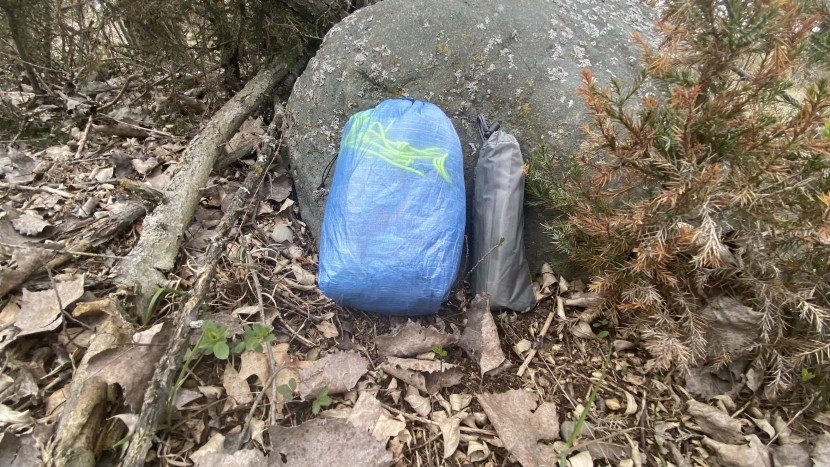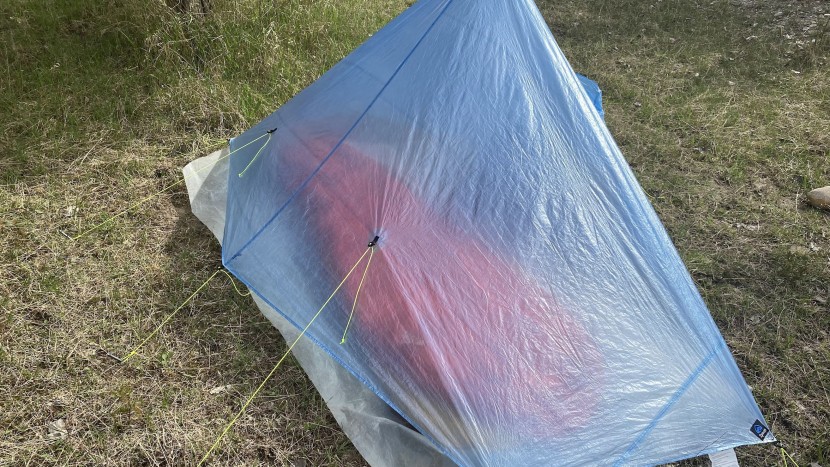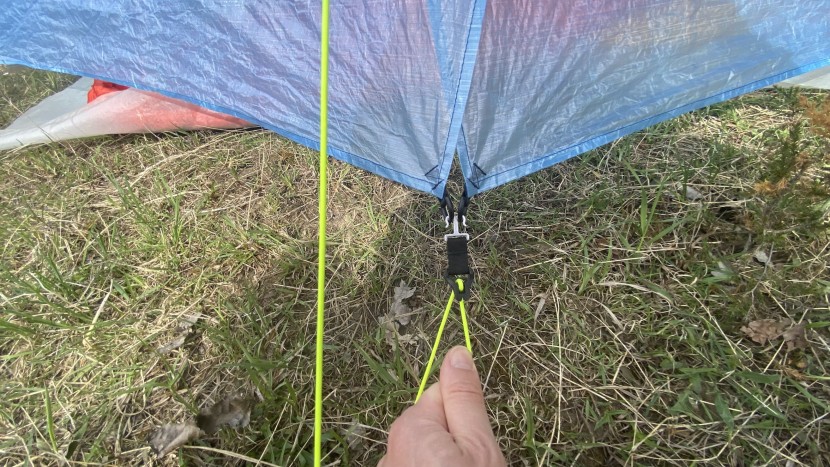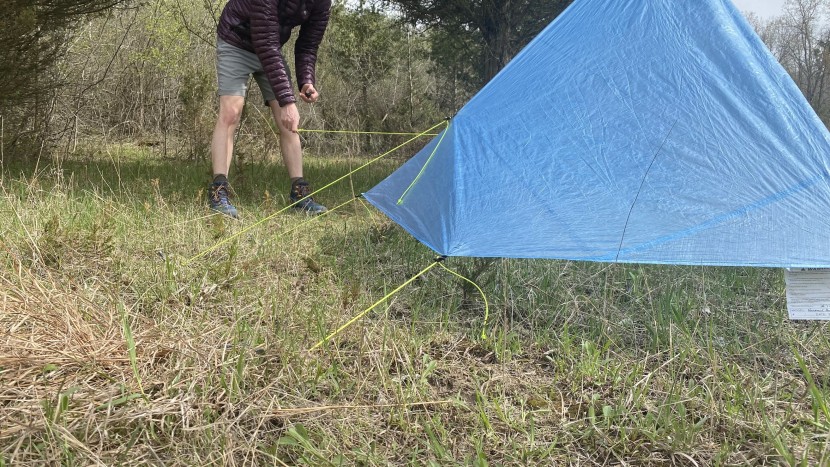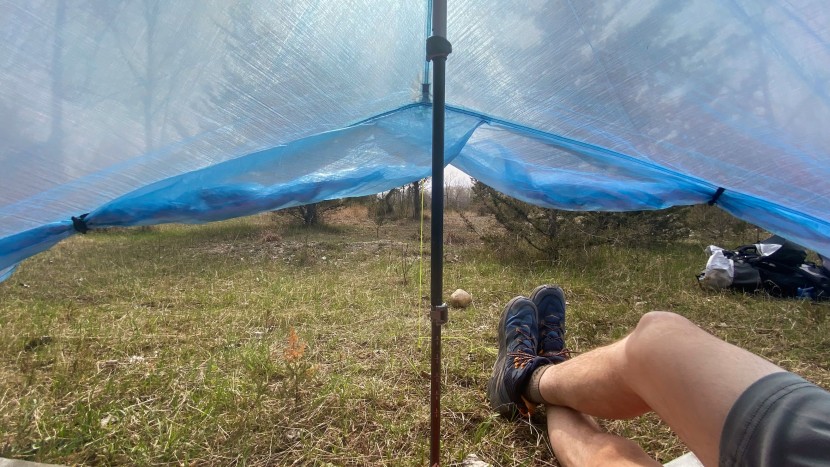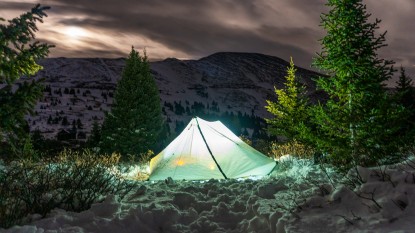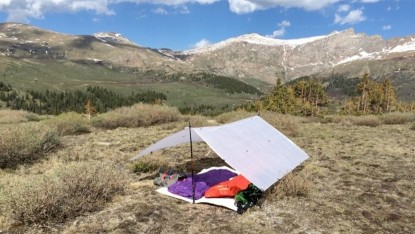
Our Verdict
Our Analysis and Test Results
This single-person shelter is made from ultralight Dyneema composite fabric. Its most differentiating features are what it doesn't have: no zippers, no storage pockets, no poles; there is nothing extra. This shelter is about keeping you warm and dry enough so you can get back to moving down the trail fast.
Livability
The Hexamid Pocket Tarp has solid dimensions for one person. At 107 inches, it has an ample floor length for tall sleepers. The max peak height of 47 inches is also solid, but that height is only at the single point where the trekking pole holds up the tarp, so it's not the most spacious interior.
The trekking pole is also offset toward the front as much as possible, but it is still in the middle of the usable space, so it creates somewhat of an obstacle to watch out for. On the plus side, the tarp pitches with the pole tip down on the ground, so it digs in and is more stable than models that flip the pole orientation. There are two door flaps that can be secured up for added airflow; however, they don't go up very high, so getting in and out of the tarp requires a roll or a hunched shuffle.
Weight
This tarp is designed to minimize weight at every corner. The Dyneema fabric weighs in at 0.38 pounds. Stakes are not included, but if you want to stick to a minimalist approach, an ultralight set of eight will add a couple of extra ounces. In addition to its low weight, this shelter packs down small and can easily fit into a water bottle pocket.
Weather Resistance
The Dyneema material does its job. It is thoroughly waterproof and doesn't stretch in heavy rain. Having said that, the single-pole design does leave it somewhat susceptible to strong wind.
If the trekking pole is set to the recommended height, the tarp perimeter sits about 6-8 inches off of the ground. This is great for airflow but also leaves the structure susceptible to gusts of wind and precipitation seeping underneath. The setup can be adjusted to mitigate this if you know that lousy weather is rolling in.
Adaptability
The Hexamid has average adaptability. Despite its single-person width, the guy lines significantly expand the site size required to pitch it. It has a single configuration; that configuration has a little bit of leeway regarding whether it is pitched high or low. The two-door flaps can be rolled back to open up the front side if you find yourself on uneven ground.
Ease of Set-Up
We struggled with this tarp the first time around. The instructions leave something to be desired. In fact, we wish we had just ditched them from the get-go and used our knowledge and the tarp geometry to figure it out.
We found it was easiest to stake out the four main corners leaving a lot of slack, then set the trekking pole inside, then stake out the remainder of the guy lines and adjust the tension appropriately. Having said that, the material itself adds another layer of challenge to the task. When Dyneema is packed up tightly, as is the case when carrying this tarp on a trip, it crinkles and creases, making it difficult to spread out and orient correctly.
Should You Buy the Zpacks Hexamid Pocket Tarp?
The Pocket Tarp is made for the ultralight fast packer who isn't concerned with creature comforts. For one person, it has sufficient space. It's not a shelter to hang out in, but it will get the job done if you just need something over your head at night. We don't think it's the best choice for the average backpacker — in many cases, it'd be worth carrying a little extra weight to have additional features. However, if reducing weight is a top priority above comfort, this one takes the cake.
What Other Ultralight Tents Should You Consider?
If saving ounces is the most important consideration, the Hyperlite Mountain Gear Flat Tarp is another one of our favorites that offers way more adaptability and space. For a one-person shelter that's durable, adaptable, and provides more protection, the Durston X-Mid 1P Gen 2 is a fantastic and less expensive (though much heavier) option.


